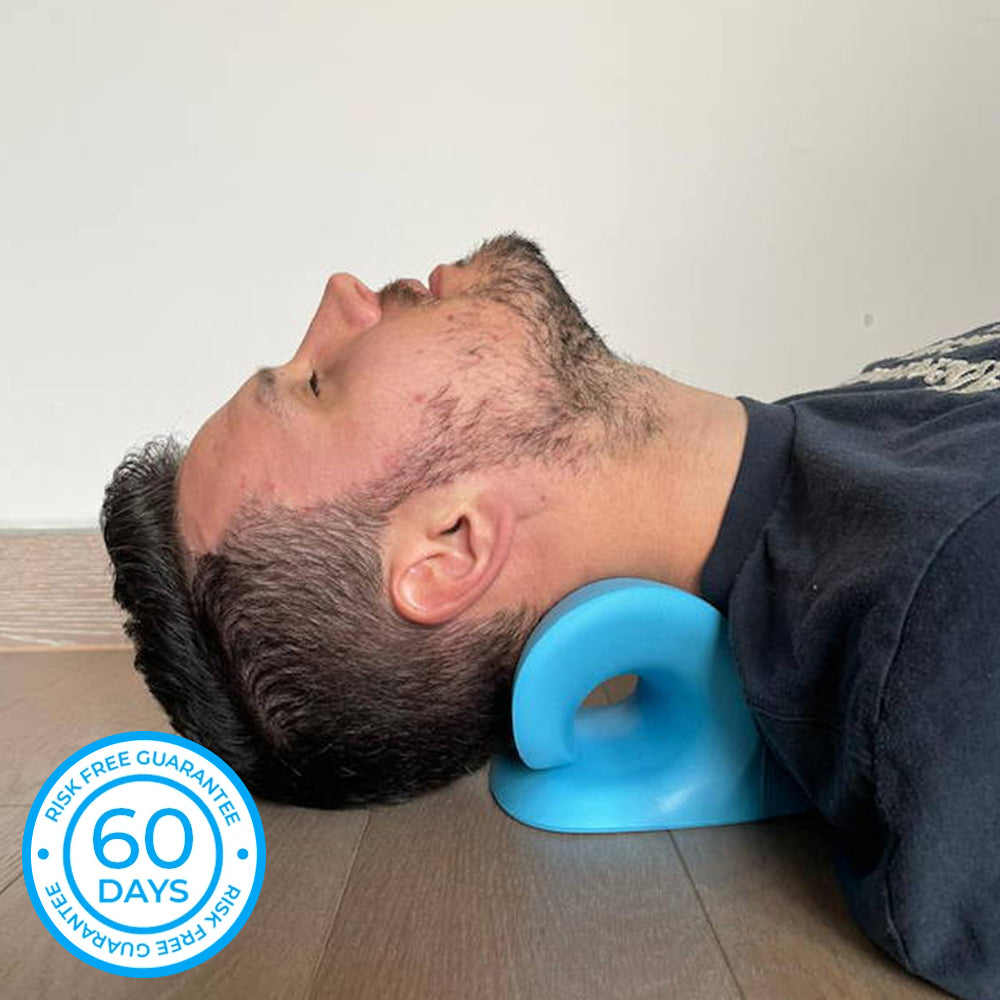Neck Cloud for Cervical Support: Kick Back and Soothe Neck Pain
Neck Cloud for Cervical Support: Kick Back and Soothe Neck Pain
Blog Article
Neck Pain in the Office: Identifying Danger Factors and Executing Ergonomic Solutions
Neck discomfort in the work environment is a common issue that can affect staff member wellness and productivity. By comprehending the different danger elements contributing to neck discomfort and executing ergonomic services, organizations can create a more helpful job setting.
Usual Reasons For Neck Pain
Neck pain in the workplace is a prevalent concern that can be credited to numerous typical causes. One of the key culprits is inadequate stance, which often arises from extended periods of resting incorrectly at a workdesk or workstation. This can bring about strain on the neck muscle mass and joints, causing pain and discomfort. Additionally, recurring activities such as frequent bending, twisting, or getting to can also add to neck discomfort over time. Straining the neck by holding it in an awkward setting for extensive periods, like cradling the phone in between the ear and shoulder, can intensify the problem (neck cloud).

Ergonomic Danger Factors
Poor functional designs in the workplace can dramatically contribute to neck discomfort among workers. Factors such as incorrect workdesk height, insufficient chair assistance, and unpleasant positioning of computer displays can all contribute in the advancement of neck pain. When employees are required to rest for prolonged durations ready that stress their neck muscular tissues, it can bring about rigidity, pain, and a lot more major bone and joint issues over time.
Additionally, inadequate ergonomic methods can result in workers taking on uncomfortable stances while functioning, such as craning their necks to see a computer screen or reaching annoyingly for a mouse or key-board. neck cloud. These unnatural positions and repeated activities can place excessive stress and anxiety on the neck and surrounding muscular tissues, resulting in pain and lowered productivity

Workdesk Arrangement Recommendations
To lessen the risk of neck discomfort and pain, there are a number of desk arrangement suggestions that employees ought to think about. Ensure that the computer display is placed at eye degree to prevent straining the neck by looking up or down.
It is also important to have sufficient lights to reduce eye pressure, as scrunching up your eyes or leaning ahead can lead to neck tension. Organize the workdesk format click here to read to maintain often used things within arm's reach, limiting the need for repeated twisting or getting to movements. By implementing these workdesk setup referrals, workers can create a much more ergonomic workspace that sustains neck health and reduces the threat of developing occupational neck pain.
Stretching and Workout Tips
To keep adaptability and lower muscular tissue stress in the work environment, including extending and workout routines can be helpful for general well-being and efficiency. Easy desk-friendly stretches can assist ease neck discomfort and stop tightness. Neck rolls, shoulder shrugs, and mild side-to-side neck stretches are reliable in relieving stress. Additionally, integrating exercises like chin tucks, shoulder blade presses, and top back stretches can assist reinforce muscular tissues that support good position.
It is vital to take brief breaks throughout the day to carry out these workouts. Setting tips or making use of applications that motivate activity can assist establish a routine extending regimen. It is necessary to listen to your body and avoid overstretching, especially if you are new to these exercises. Uniformity is crucial, so purpose to incorporate stretching and exercise into your everyday work regimen. By prioritizing these activities, you can boost your physical well-being, lower the risk of neck discomfort, and improve your overall productivity in the office.
Significance of Regular Breaks
In a busy work environment where demands can contribute to physical pressures like neck discomfort, developing a routine that emphasizes the importance of normal breaks is paramount. By including brief breaks right into the find out this here work regular, workers can minimize the risk of developing neck pain and enhance general convenience and productivity.
These breaks can likewise offer as an opportunity for workers to exercise leisure techniques or gentle neck stretches, further advertising musculoskeletal wellness. Applying a culture that values and prioritizes routine breaks can have a considerable influence on reducing neck pain and boosting total wellness in the work environment.
Conclusion
To conclude, attending to ergonomic risk variables and executing appropriate workstation arrangements are crucial in minimizing neck pain in the work environment. By advertising good position, providing sufficient support, and motivating routine breaks and stretches, companies can produce a healthier and more efficient job setting for employees. Focusing on worker well-being through ergonomic solutions is crucial to avoiding pain and boosting overall workplace fulfillment.
Neck discomfort in the workplace is a common concern that can affect employee wellness and efficiency. By determining and addressing these common reasons of neck discomfort in the office, employers can take positive steps to create a much more ergonomic and comfortable job atmosphere for their staff members.
Poor comfort designs in the workplace can considerably add that site to neck discomfort amongst staff members. By applying these desk configuration suggestions, employees can develop a much more ergonomic work area that sustains neck health and wellness and reduces the threat of creating occupational neck discomfort.
Neck rolls, shoulder shrugs, and mild side-to-side neck stretches are efficient in easing tension.
Report this page